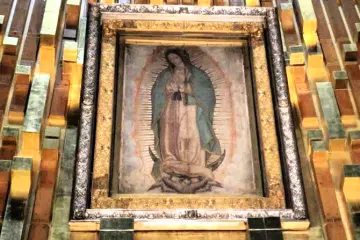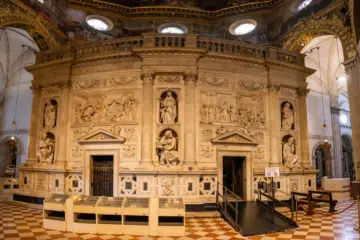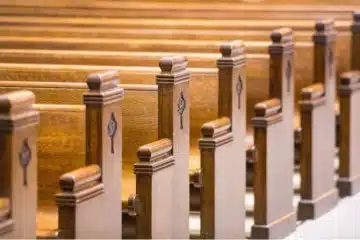What should I do with used religious items that I no longer need?

Catholics engage with their faith in bodily and material ways—not just genuflecting, kneeling, and making the sign of the cross but thumbing rosary beads, collecting holy cards, and praying before statues and artwork. Unlike members of some non-Catholic faith traditions, Catholics have long fostered a kind of tactile piety.
But all good things reach their useful end. We may wonder what to do with a broken rosary, a damaged crucifix, a worn-out Bible, or a long-weathered Virgin Mary statue. Can they be discarded or recycled? What is proper for these items with ties to faith and practice?
The Church does not offer much official teaching on the disposal of items. It is based on tradition and pious custom. However, some general guidelines can be followed, depending on the kind of item and whether it has been blessed and set apart for sacred use.
Sacramentals and Sacred Objects
Most religious items in people’s homes are classified as sacramentals, having received spiritual effects through the Church’s intercession and blessing. They are reminders of God’s grace and His presence in their lives. They include rosaries, crucifixes, saints’ medals, and scapulars.
Such material objects help direct the faithful to the divine and assist in their prayers and devotions. They are not sacraments but can assist us in fruitfully receiving them (Catechism of the Catholic Church 1667, 1670). When blessed by the Church, an item is set apart for a sacred purpose. If an item is blessed (or if it is unknown whether it has been blessed), it should be treated reverently.
Objects that have an inherent connection to the sacraments—such as chalices (vessels to hold the Precious Blood), ciboria (for the consecrated hosts), and tabernacles (locked receptacles for the reservation of the Eucharist)—are sacred. Church law teaches that “sacred objects, which are designated for divine worship by dedication or blessing, are to be treated reverently” (Canon 1171). They are not to be used for non-religious purposes or discarded without concern for their future.
Unusable or Unwanted?
In deciding what to do with religious items, it should be determined whether they can still be used; are they unusable or simply unwanted? If they are usable, some apostolates will accept them for redistribution (for instance, the St. Mary Recycle Mission Group: stmaryrecyclemissiongroup.com).
For unusable items, a respectful means of disposal is to either burn or bury them. Flammable items (e.g., Bibles or liturgical books) can be burned. Other items like statues, rosaries, or liturgical vessels can be broken or disassembled and then buried. This reflects the understanding that these items can no longer be used and should be returned to the earth.
This also prevents the items from being desecrated, discarded in the trash and ending up in a landfill, or treated as everyday objects (for instance, a chalice being used for ordinary drink). Items like chalices and ciboria—since they have held the Body and Blood of Jesus—need to be buried or melted down.
For items that are not blessed, such as prayer cards or unsolicited devotional items received by mail, they can be gifted to another, donated to an apostolate (such as an evangelization team or prison ministry), or discarded.
How we treat religious items expresses our respect for them and what they represent. Though the items may have no value in and of themselves, their meaning comes from their connection to the divine and to worship of Him. ✣
 Father David Endres is professor of Church history and historical theology at Mount Saint Mary’s Seminary & School of Theology.
Father David Endres is professor of Church history and historical theology at Mount Saint Mary’s Seminary & School of Theology.
This article appeared in the December 2025 edition of The Catholic Telegraph Magazine. For your complimentary subscription, click here.













